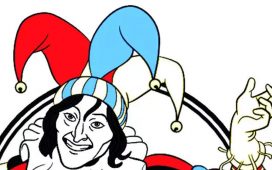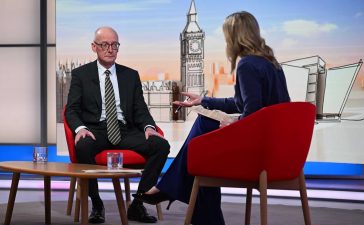
Ernest Hemingway once said that he liked to look at Cezanne’s paintings when he was ravenously hungry. In his 1964 memoir of his Paris apprentice days, The Moveable Feast, Hemingway writes: ‘I learned to understand Cezanne much better and to see truly how he made landscapes when I was hungry. I used to wonder if he were hungry too when he painted; but I thought possibly it was only that he had forgotten to eat. It was one of those unsound but illuminating thoughts you have when you have been sleepless or hungry.’
Hunger sharpens one’s critical faculties. It also sharpens one’s ability to feel and seek out injustice. And then, I looked at myself in the mirror. No way could someone ever mistake me for a writer. There was nothing frugal about my frame. I looked like a well-fed bulldog just awakened from his siesta.
In India, a person who spends an average of ₹27 in rural areas and ₹33 in urban areas each day is considered living below the poverty line. While there is no verifiable data, a conservative estimate puts 100 mn people in the BPL category. That is almost on par with the combined populations of Britain and Canada. So, it’s not as if I lack company. There are many around who are worse off than me.
While ₹33 seemed like too drastic a haircut, I decided I would try and survive on ₹100 a day. As Rama Bijapurkar calls in her new book, Lilliput Land: How Small is Driving India’s Mega Consumption Story, I would become a ‘Lilliput’ consumer. Apparently, there are a lot of us Lilliputians in India lying in wait for the next economic Gulliver to wash ashore and to overpower us.
India’s mega consumption story, Bijapurkar writes, has ‘lots and lots of small consumers earning and spending just a little bit individually that adds up to an enormous amount.’ So, I went downstairs and bought six eggs, half a loaf of white bread, and five bananas from the housing society’s grocery store. If I had bought one more banana, I would have gone over budget.For breakfast, I boiled one egg and had two slices of toasted bread liberally lashed with butter. My wife pointed out that I had neither paid for the butter nor salt and pepper. I nodded sheepishly and added those costs to my per diem. I had gone over budget. Reluctantly, I paid ₹10 to my wife. For lunch, I broke two eggs, made myself a succulent omelette, and consumed it with four slices of toasted bread. I gave up butter this time. But sadly, I still had to pay my wife ₹10 for salt and Saffola. I had three bananas for dinner, and went to bed feeling virtuous and proud. This BPL business was making me feel fit.
At 1 am, I woke up ravenously hungry – like Hemingway. But where were my Cezannic apples? As the world slumbered around me, I opened the fridge. As I tucked into the bowl of cold pasta with my fingers, I remembered the brilliant, but mostly penurious, Henry Miller, who, while prone to finding eiderdowns and mulberry leaves in the most unlikely of places, believed that writing was primarily a criminal activity, to be done when no one could see you, like picking pockets.
And as to how much should a writer consume? Well, as much as he could bloody well commandeer to assuage his personal hunger index.
The writer is author of The Patna Manual of Style










